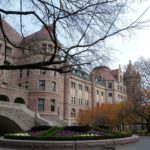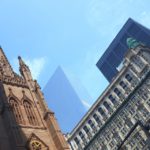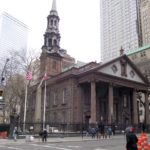Arguably the world’s most famous urban park, Central Park has been one of New York City’s most popular recreational destinations since the middle of the 19th century. In a city known as the concrete jungle, the park offers a relaxing and idyllic slice of the countryside in the middle of the largest city in the country, making it a haven for weary New Yorkers and tourists alike. Few people, however, really know what went into building the park and its history since completion. Here’s a quick look at the fascinating hidden history of Central Park.
The origins of the park go back to New York City’s rapid growth in the first half of the 19th century and the rigid grid plan implemented in the Commissioner’s Plan of 1811. The combination of rapid growth due to industrialization and high rates of immigration and the lack of any significant green space in the city’s grid plan led many to worry that the city would lack adequate public space for its future population. In the 1840s, a group of civic-minded wealthy and influential citizens led by publisher William Cullen Bryant and landscape architect Andrew Jackson Downing began to lobby for a large public park to be created. In 1853, the New York State legislature heeded the public’s call and set aside 700 acres in the middle of Manhattan be dedicated as a new public park for all to enjoy.
A commission was appointed by the state government to oversee the park’s development and held a competition in 1857 to select a design for the new park. The contest was ultimately won by Frederick Law Olmstead and Calvert Vaux with their “Greensward Plan” a design that emulated the great urban parks of major European cities like London and Paris and emphasized the natural landscape.
The park, once the site of a community of impoverished African-Americans as well as Irish and German immigrants, was cleared and construction began in 1860. Construction was fraught with infighting between local politicians and Olmstead and Vaux, though it was finally completed in 1873. Additional acreage was also added just to the north of the original park plan, extending it up to 110th Street. The park, entirely man-made but sculpted to look like the natural environment, was cleared with more gunpowder than what was used at the Battle of Gettysburg.
The park immediately became popular among New Yorkers but fell into decline around the turn of the 20th century. It was revived by the controversial but influential Robert Moses, who constructed sports fields and restored the park’s scenery. Central Park again fell into decline after World War II, becoming known for crime and its decrepit state rather than its scenic beauty. However, the establishment of the Central Park Conservancy in 1980 helped to revive the park yet again and today it stands as the most popular urban park in the United States, visited by more than 40 million people annually.
Throughout its long and often tumultuous history, Central Park has always been one of New York City’s most iconic destinations. Today, the park is enjoying a renaissance and continues to attract millions of New Yorkers and visitors alike each year.






